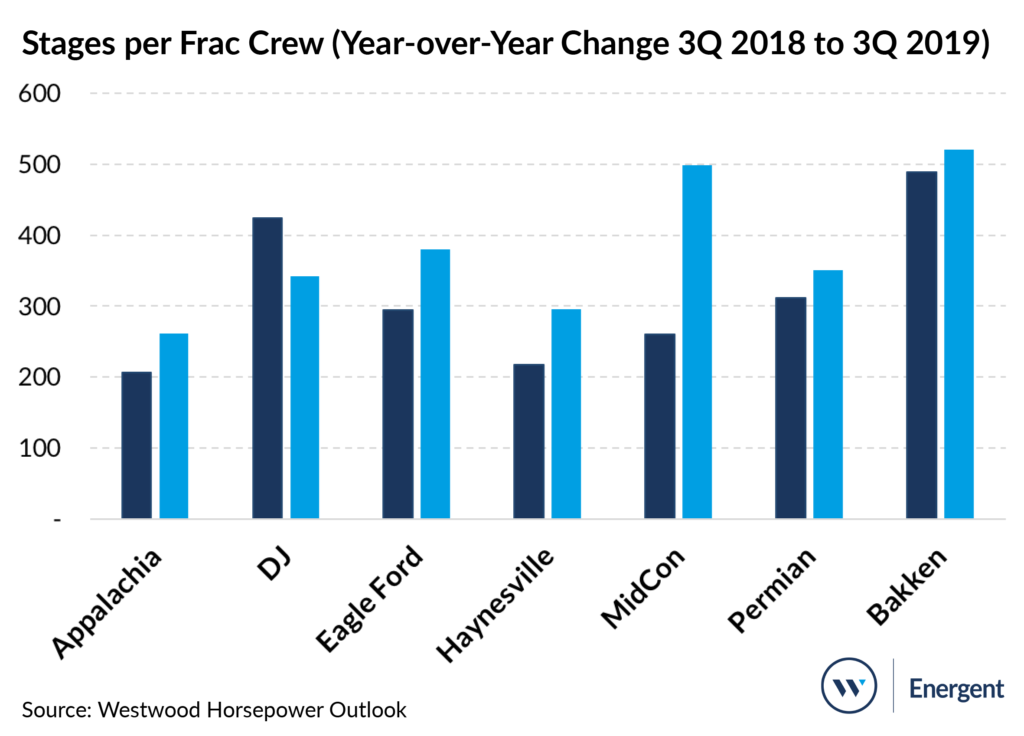In 2019, the investor community stressed the importance of capital discipline and environmental, social, and governance (“ESG”) to operators and service companies. Super-majors, independents, and small-cap E&Ps must now live within their cash flow from operations rather than external capital. This focus on capital discipline and ESG caused oilfield service companies, specifically frac companies, to become more efficient, consolidate services, and seek stability for their product service lines.
Frac Crew Efficiency Data Illustrates Gains
Efficiency initiatives are nothing new to the oil and gas industry. Typically, the industry focused more on drilling days, days to depth, and spud to sales cycle times. However, as pad drilling evolved across the unconventional plays, operators turned their attention to hydraulic fracturing, frac sand logistics, and frac crew performance.
Frac stages per day and stages per frac crew are widely used performance metrics for operators and frac companies. Over the last year, each basin has improved on the stages per frac crew metric except for the DJ-Niobrara. The MidCon increased by 92% during this period compared to the Haynesville at 36% and Eagle Ford at 29%.
In each of these basins, active frac crews declined in 2019, yet many of the frac companies improved the number of stages pumped per crew.





